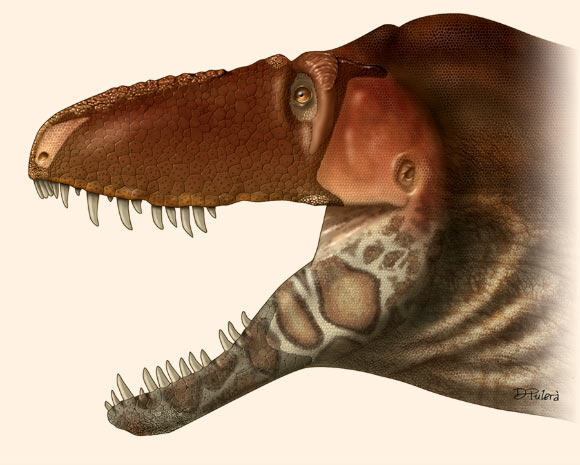After recovering a new species of Tyrannosaurus off the banks of the Montana river, a research team from the University of New Mexico analyzed the texture of its facial bones.
They discovered that the face of tyrannosaurs had an additional layer of skin with an increased degree of sensitivity. Apparently, they developed such trait due to their arms being so short, which rendered them partially unable to interact with their environment compared to other animals.

T-rex’s sensitive side
The analysis was performed by scientists from Wisconsin, Montana, New Mexico, and Australia. They determined that the species was a Daspletosaurus horneri, meaning “Horner’s Frightful Lizard,” honoring John R. Horner, former curator at the Museum of the Rockies in Bozeman, Montana.
Apparently, Montana is an ideal place for finding fossilized remains, as it has rocks exposed within the right environment which most likely contain dinosaurs.

The fossil also provides clues about how the tyrannosaur family evolved. They determined that these dinosaurs had a snout that was especially sensitive to touch, and was covered by a protective, scaly layer.
“They wouldn’t be able to interact with their environment with their hands the way mammals do — find food, build nests, tend to eggs and young. In order to do these things, Daspletosaurus needed to use its feet or head. The discovery and analysis of the tyrannosaur shows that the dinosaur had a developed face sensitivity similar to the sensitivity in our finger tips, suggesting it could use its snout for all those complex ecological interactions, similar to the way crocodiles do today,” stated Professor Jason R. Moore.
Researchers also discovered that different species do not overlap in time. This was thanks to the fact that Daspletosaurus horneri was the last of its lineage, closely related to Daspletosaurus torosus, which was found in Alberta, Canada. They determined that D. torosus eventually evolved into D. horneri. It seems that the evolutionary process took place over the course of 2.3 million years.
The discovery of that scaly layer allows comparing tyrannosaurs to birds, mammals, and crocodiles, the latter being similar animals whose snouts are sensitive to touch, serving as their main tool for stalking down prey. The findings were generated from a comparison between species, focusing primarily on comparing dinosaurs and crocodilians, which scientists argue are their closest living relatives.
It also appears that crocodilians are identical to dinosaurs except that crocodilians have a band of smooth bone on their tooth row between their snout and jaw bones. On the other hand, the jaws of both tyrannosaurs and crocodilians have nerve openings, allowing for an increased number of nerve connections to latch onto the skin.
Researchers compared these nerve connections to those “sixth senses” of some vertebrates, such as infrared sensing whiskers in pit vipers, increased sensitivity in an elephant’s snout, and the ability of birds to perceive magnetic fields to guide their migratory process.
Source: EurekAlert
